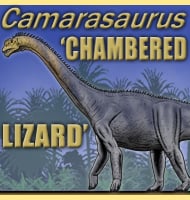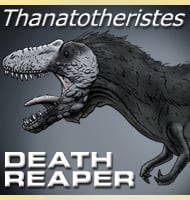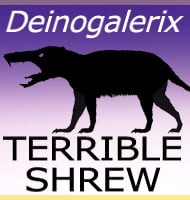In Depth
Proconsul is a primate that seems to be stuck in transition between monkeys and apes. So far no tail has ever been found and the hands are more dexterous than monkeys, together suggesting a primitive ape lineage. The metacarpals however are curved and the postures of reconstructed individuals are more like those of monkeys. Additionally the limbs of Proconsul seem to only support above branch locomotion which means that while Proconsul could climb up branches, it would have to stay on top of them and probably could not move around by brachiation (swinging from the underside of one branch to another). This view is also confirmed by the presence of a rigid elbow joint that would have limited the range of forelimb movements.
The mix of monkey and ape features did actually lead to early speculation that Proconsul might be a transitory form between these two groups of primates and hence an ancestor to humans. However further study of Proconsul has now led to the wide acceptance of the idea that Proconsul is actually part of a sister group of primates (called the Proconsulidae) related to but separate from the actual ancestors of apes. Since most researchers today now treat Proconsul as an evolutionary offshoot of the actual ancestors of apes, this means Proconsul is considered to no longer be a potential ancestor to modern humans. This is not all that surprising as throughout the animal kingdom represented in the fossil record there are many evolutionary side branches that radiate out from ancestral forms that don’t seem to go anywhere and there is no reason for primates to be any different.
The exact habitat that Proconsul inhabited is a little uncertain as the fossil sites that its fossils are known from suggest grassland or forest. A compromise however would be woodland habitats where sparse growths of trees were surrounded by more open grassland. In this habitat Proconsul could scour the ground while foraging while still having the option of retreating into the trees at the first sign of danger. Potential trouble could come from early sabre toothed cats like Machairodus that would have had a much harder time chasing primates like Proconsul up and through the trees rather than across open ground.
The teeth of Proconsul have very thin enamel on them which reveals that the teeth are not suited to heavy grinding of tough fibrous plants. Instead the teeth of Proconsul are much better suited to mashing soft bodied fruits that could have either been picked from trees as they ripened or foraged as Proconsul searched for fallen fruits on the ground. The canine teeth of male Proconsul are larger than those of females, something which is called sexual dimorphism. This size difference was probably for the purpose of males displaying to one another for dominance.
Those of you who know there Roman history will know that Proconsul is actually the title that was appointed to the governor of a province in the Roman Empire, however this was not the inspiration for naming the genus Proconsul (also note the change between the lack of italics for the Roman title definition and the inclusion of them for the genus name - binomial names of animals must always be referred to in italics). Around the turn of the nineteenth and twentieth centuries there were two well-known performing chimpanzees that bore the name Consul, one in the Folies Berg�re of Paris, France in 1903 and the other in Belle Vue Zoo of Manchester, England in 1894. The Consul of Belle Vue Zoo was also mentioned in a poem by Ben Brierley after its death. The name Consul was also given to a chimpanzee at London Zoo and while this is the one that Arthur Hopwood has in the past been credited with using as inspiration, retellings of the story have muddled things to the point where there are now different variations. Rather than identifying the individual in question we’ll skip to the important bit. The name Consul was one well known to Hopwood that bore special significance to chimpanzees. With the fossils of Proconsul being much older than any remains known for a chimpanzee, Hopwood added ‘Pro’ to ‘Consul’ to create Proconsul, which simply means ‘Before Consul’, referencing the much earlier appearance of Proconsul before chimpanzees.
Further Reading
– The anatomy and systematic position of the early Miocene proconsulid from Meswa Bridge, Kenya. – Journal of Human Evolution 56(5):479-496. – T. Harrison & P. Andrews – 2009. – A systematic revision of Proconsul with the description of a new genus of early Miocene hominoid. – Journal of Human Evolution. 84: 42–61. – Kieran P. McNulty, David R. Begun, Jay Kelley, Fredrick K. Manthi & Emma N. Mbua – 2015.









